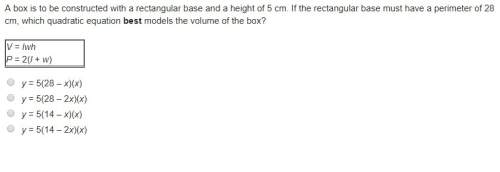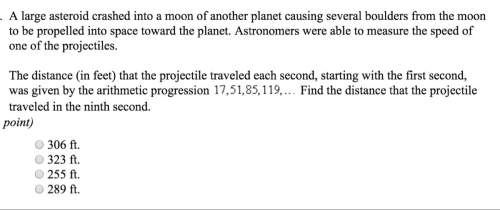
Mathematics, 14.10.2021 02:40 jujurae03
The two dot plots below compare the forearm lengths of two groups of schoolchildren:
Two dot plots are shown one below the other. The title for the top dot plot is Forearm Length, Group X and the title for the bottom plot is Forearm Length, Group Y. Below the line for each dot plot is written Length in inches. There are markings from 10 to 13 on each line at intervals of one. For the top line there are 4 dots above the first mark, 4 dots above the second mark, and 2 dots above the third mark. For the bottom line there are 2 dots above the second mark, 2 dots above the third mark, and 6 dots above the fourth mark.
Based on the visual inspection of the dot plots, which group appears to have the longer average forearm length?
Group X, because no child in the group has a forearm length longer than 12 inches.
Group X, because four children in the group have the least forearm length of 10 inches.
Group Y, because a child in the group has the least forearm length of 10 inches.
Group Y, because six children have a forearm length longer than 12 inches.

Answers: 3
Another question on Mathematics

Mathematics, 21.06.2019 13:30
David bought a poster for an art project. the poster is 2.7 feet wide and 3.9 feet tall. what is the area of the poster?
Answers: 2

Mathematics, 21.06.2019 21:30
Alcoa was $10.02 a share yesterday. today it is at $9.75 a share. if you own 50 shares, did ou have capital gain or loss ? how much of a gain or loss did you have ? express the capital gain/loss as a percent of the original price
Answers: 2

Mathematics, 21.06.2019 22:30
In a certain city, the hourly wage of workers on temporary employment contracts is normally distributed. the mean is $15 and the standard deviation is $3. what percentage of temporary workers earn less than $12 per hour? a. 6% b. 16% c. 26% d. 36%
Answers: 1

Mathematics, 21.06.2019 23:00
Each of the following data sets has a mean of x = 10. (i) 8 9 10 11 12 (ii) 7 9 10 11 13 (iii) 7 8 10 12 13 (a) without doing any computations, order the data sets according to increasing value of standard deviations. (i), (iii), (ii) (ii), (i), (iii) (iii), (i), (ii) (iii), (ii), (i) (i), (ii), (iii) (ii), (iii), (i) (b) why do you expect the difference in standard deviations between data sets (i) and (ii) to be greater than the difference in standard deviations between data sets (ii) and (iii)? hint: consider how much the data in the respective sets differ from the mean. the data change between data sets (i) and (ii) increased the squared difference îł(x - x)2 by more than data sets (ii) and (iii). the data change between data sets (ii) and (iii) increased the squared difference îł(x - x)2 by more than data sets (i) and (ii). the data change between data sets (i) and (ii) decreased the squared difference îł(x - x)2 by more than data sets (ii) and (iii). none of the above
Answers: 2
You know the right answer?
The two dot plots below compare the forearm lengths of two groups of schoolchildren:
Two dot plots...
Questions



Social Studies, 28.08.2019 12:30

English, 28.08.2019 12:30

World Languages, 28.08.2019 12:30


Mathematics, 28.08.2019 12:30

Mathematics, 28.08.2019 12:30



Chemistry, 28.08.2019 12:30



Business, 28.08.2019 12:30

History, 28.08.2019 12:30









